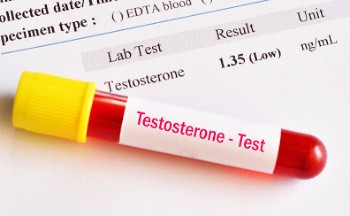Exercise might be the best way to fight ‘Low T’
Regular exercise might lower a man’s risk for low testosterone.
Scientists report that men who get over 1,000 MET minutes of physical activity each week are less likely to develop testosterone deficiency. (MET stands for “metabolic equivalent.”)
The Physical Activity Guidelines Advisory Committee (PAGAC) recommends that most people exercise for 500 to 1,000 MET minutes weekly.
Scientists may have found a link between the amount of exercise a man gets and his testosterone levels.
What is Testosterone?
Testosterone is the male sex hormone that is made in the testicles. Testosterone hormone levels are important to normal male sexual development and functions.
During puberty (in the teen years), testosterone helps boys develop male features like body and facial hair, deeper voice, and muscle strength. Men need testosterone to make sperm. Testosterone levels generally decrease with age, so older men tend to have low blood testosterone levels.
What is Low Testosterone?
Some men have low testosterone levels. This is called testosterone deficiency (TD) or often referred to as Low Testosterone (Low-T).
The American Urology Association (AUA) identifies low blood testosterone (Low-T) as less than 300 nanograms per deciliter (ng/dL) on two tests obtained in the morning. Several symptoms or conditions may accompany TD:
- Low sex drive
- Fatigue
- Reduced lean muscle mass
- Irritability
- Erectile dysfunction
- Depression
- There are many other possible reasons for these symptoms, such as: opioid use, some congenital conditions (medical conditions you are born with), loss of or harm to the testicles, diabetes, and obesity (being overweight). See your doctor if you have any of these symptoms.
Exercise might help combat Low T.
Men who exercise more might be at reduced risk for testosterone deficiency, researchers reported last May at the American Urological Association’s 2020 Virtual Experience press conference.
Low testosterone can be a serious health issue for men. When levels of this hormone decline, they might feel weak, moody, and fatigued. They might also start having trouble with erections and low sexual desire.
The study included data from 7,597 men between the ages of 18 and 80. All of the men were participants in the National Health and Nutrition Examination Survey (NHANES) between 2011 and 2016. NHANES is a series of studies that focuses on the health of people in the United States.
The men answered questions about their physical activity and had their testosterone levels measured.
Physical activity was evaluated based on the recommendations of the Physical Activity Guidelines Advisory Committee (PAGAC). Activity was categorized according to metabolic equivalents (METs). The amount of energy a person exerts while at rest is valued at one MET. Brisk walking equals about 5 METs. Running at 7 mph is about 11.5 METs.
The PAGAC recommends that most Americans spend between 500 and 1,000 MET minutes on exercise each week.
The men in the study were divided into three groups depending on their activity level. About 9% of them got the recommended amount of exercise. Almost 59% exceeded the recommended amount, and 32% got less than the recommended amount.
Overall, 29% of the men had low testosterone levels.
After further analysis, the authors found that men who got more exercise than recommended had a “significantly decreased likelihood” of low testosterone compared to men who did not get recommended amounts.
More research is needed, the scientists said, as the results need to be confirmed. However, they added that “these data provide a basis for counseling patients regarding the positive association between exercise and [testosterone levels].”
Testosterone Resources
Healthline.com
Roland, James
“What Exactly Are METs, and What Should You Know About Them?”
(October 21, 2019)
https://www.healthline.com/health/what-are-mets#calculation
The Journal of Urology
Fantus, Richard, et al.
“The Association Between Exercise and Serum Testosterone Among Men in the United States”
(Abstract PD25-03. Presented May 15, 2020 at the American Urological Association’s 2020 Virtual Experience press conference)
https://www.auajournals.org/doi/10.1097/JU.0000000000000882.03
Renal and Urology News
Charnow, Jody
“Testosterone Levels Falling in Young Men”
(May 17, 2020)
Urology Times
Kahl, Kristie L.
“Exceeding exercise guidelines may reduce likelihood of low T in men”
(May 27, 2020)
https://www.urologytimes.com/view/exceeding-recommended-exercise-guidelines-may-lower-t-men



